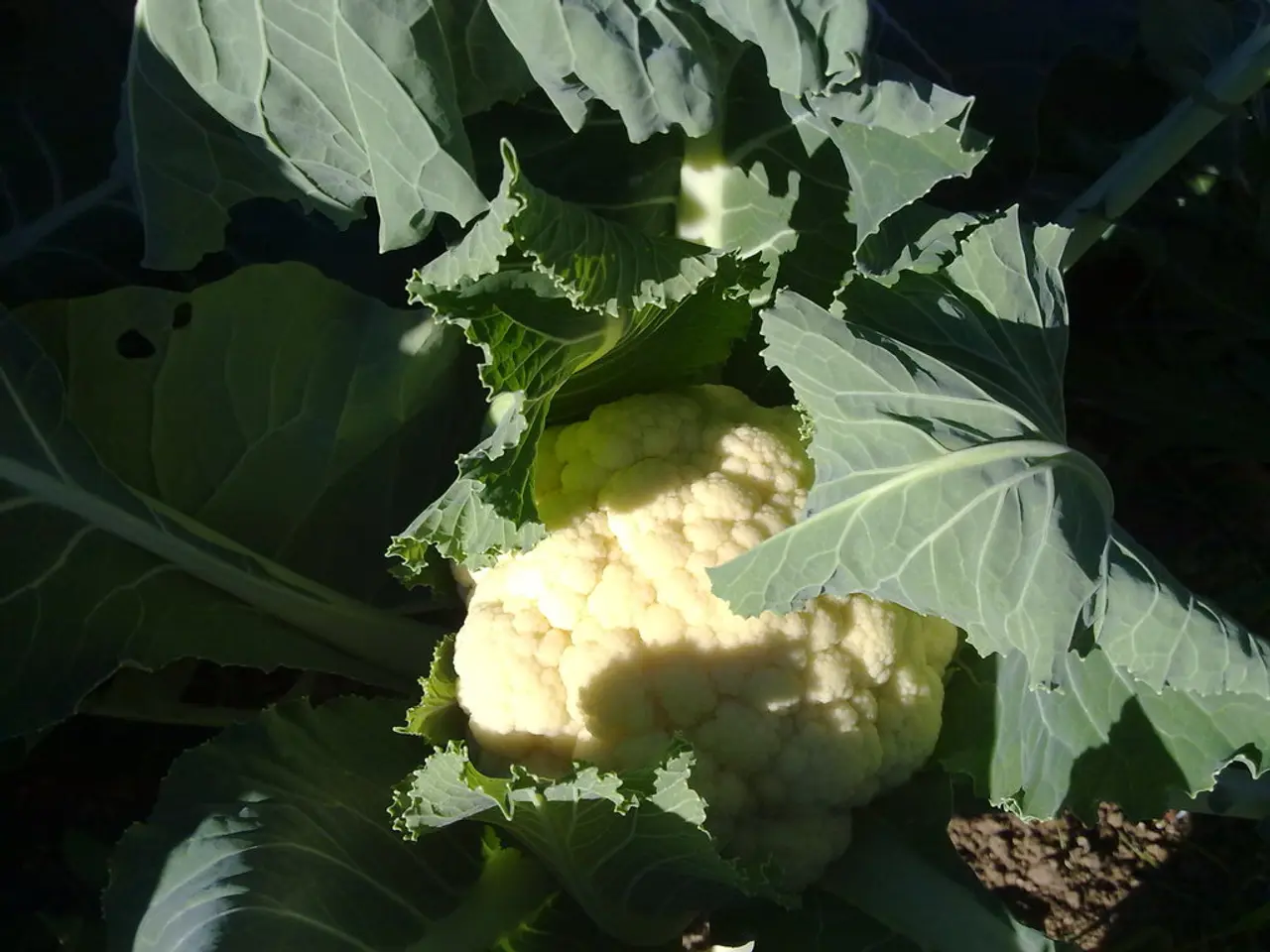Cultivating Cauliflower Made Easy: A Rewarding Venture for Beginners
Growing Cauliflower in the UK: A Guide for Gardeners
Cauliflower, a versatile and nutritious vegetable, can be a rewarding addition to your home garden. Not only does it offer exceptional nutritional value, but growing it can also provide significant financial savings and contribute to sustainability. Home-grown cauliflower contains up to 40% more vitamin C than supermarket varieties, with 75mg of vitamin C per 100g, plus vitamin K, folate, fibre, and antioxidants.
Choosing the Right Variety
Selecting the right variety is crucial for successful cauliflower cultivation in the UK. Choose varieties adapted to the UK climate and your specific growing season. For summer planting, varieties that mature in about 12-14 weeks are ideal. Compact or dwarf types may be preferable for smaller or urban gardens, while traditional full-size varieties work well in larger beds.
Planting and Care
Sow seeds about 1cm deep with spacing of roughly 10cm between plants in well-fertilized soil rich in organic matter such as compost. Starting seeds indoors or in a sheltered environment before transplanting can improve success rates. Cauliflower prefers a sunny spot with soil that is moist but well-drained.
Regular watering is crucial; keep the soil consistently moist but not waterlogged—during hot weather, shade young plants to avoid stress. Improve soil fertility with ample compost before planting and consider additional feeding during the growing period. Mulching helps retain moisture and suppress weeds.
Preventing Common Problems
Common problems in cauliflower cultivation can be prevented through proper cultural practices and identified and treated with targeted organic control methods. Downy Mildew can be prevented by ensuring good air circulation and avoiding overhead watering. Clubroot can be improved by increasing drainage, lime acid soils, and maintaining a four-year crop rotation.
Harvesting and Storage
Harvest when heads are firm, compact, and before the curds begin to separate, typically around 12-14 weeks after planting, depending on the variety. Regularly check cauliflower heads and cut with a sharp knife while still compact to ensure best quality.
Cauliflower can be stored for short-term (1-2 weeks) by wrapping in perforated plastic bags and storing in the refrigerator crisper drawer, or for long-term by freezing, pickling, or dehydrating.
Companion Planting
Companion plants for cauliflower include those that deter pests and attract beneficial insects, such as onions, garlic, marigolds, and dill. Nasturtiums act as a trap crop for aphids and cabbage white butterflies, while catnip is a stronger pest deterrent than many chemical alternatives.
Extending the Growing Season
Using polytunnels or cloches can help extend the growing season and provide extra protection against wind and cold, enhancing conditions for cauliflower growth.
In summary, grow UK-suited cauliflower varieties in well-prepared, fertile soil with consistent moisture and sun exposure; protect the crop from heat stress and pests; and harvest promptly when heads are firm for optimum results. With the right care and attention, growing cauliflower transforms from a challenging endeavour to a deeply rewarding practice.
Sustainability can be enhanced by growing your own cauliflower at home, as it offers nutritional benefits and financial savings. Nutrient-rich home-grown cauliflower, with up to 40% more vitamin C than supermarket varieties, can be a fantastic addition to a healthy lifestyle and cooking.
To ensure successful cultivation in the UK, choose the right variety adapted to the UK climate and growing season. For instance, varieties maturing in 12-14 weeks are suitable for summer planting, while compact or dwarf types are suitable for smaller gardens.
For optimal growth, sow seeds about 1cm deep and provide proper watering, ensuring soil remains consistently moist but not waterlogged. Cauliflower prefers a sunny spot with well-drained, fertile soil enriched with organic matter.
Prevent common issues, such as Downy Mildew and Clubroot, by practicing good air circulation, avoiding overhead watering, and ensuring proper soil drainage, lime acid soils, and a four-year crop rotation.
Upon reaching maturity in about 12-14 weeks, harvest firm, compact heads before they separate. Cauliflower can be stored for short-term refrigeration or long-term freezing, pickling, or dehydrating for future use.
To deter pests and attract beneficial insects, consider companion plants like onions, garlic, marigolds, dill, and nasturtiums. Catnip can also act as a potent pest deterrent.
To extend the growing season, use polytunnels or cloches for extra protection against wind and cold. With the right care and attention, cultivating cauliflower can transform from a challenge to a deeply rewarding practice, fostering a sense of connection to food, nutrition, and home-and-garden lifestyle.
Lastly, be mindful of ethical considerations while choosing recipes and cooking methods to complement your home-grown cauliflower, contributing to overall sustainability in food-and-drink.




